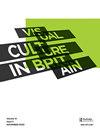约翰·卡特FSA(1748-1817):一个新的语料库的图纸,和油漆室
Q2 Arts and Humanities
引用次数: 0
摘要
这篇文章考察了位于纽黑文的耶鲁大学英国艺术中心的一组绘画作品,这些作品是我在2010年发现并归因于约翰·卡特(1748-1817)的。在卡特收藏的涵盖威斯敏斯特的七十五幅画作中,有四幅对1800年的彩绘室壁画和挂毯有了更详细的了解。在卡特的注释下,这些图纸可以与他早期在维多利亚和阿尔伯特博物馆以及伦敦大英博物馆发现的其他彩绘室图纸一起阅读。这些绘画不仅记录了格鲁吉亚时代晚期伦敦的一个珍贵时刻,在那里,一些最引人注目的中世纪墙壁装饰被揭开,而且它们还将卡特对中世纪建筑的态度及其同时代人对其的“改进”置于背景中。本文章由计算机程序翻译,如有差异,请以英文原文为准。
John Carter FSA (1748–1817): A New Corpus of Drawings, and the Painted Chamber
This essay examines a corpus of drawings at the Yale Center for British Art, New Haven, that I discovered and attributed to John Carter (1748–1817) in 2010. Of Carter’s seventy-five drawings in this collection that cover Westminster, four offer further detailed insights into the Painted Chamber’s wall paintings and tapestries c.1800. Annotated by Carter, these drawings can be read alongside his other earlier drawings of the Painted Chamber found today in the Victoria and Albert Museum, and the British Museum in London. Not only do these drawings record a precious moment in late-Georgian London where some of the most remarkable medieval wall decorations were uncovered, but they also contextualize Carter’s attitude to medieval architecture and their ‘improvement’ by his contemporaries.
求助全文
通过发布文献求助,成功后即可免费获取论文全文。
去求助
来源期刊

Visual Culture in Britain
Arts and Humanities-Visual Arts and Performing Arts
CiteScore
0.60
自引率
0.00%
发文量
1
 求助内容:
求助内容: 应助结果提醒方式:
应助结果提醒方式:


